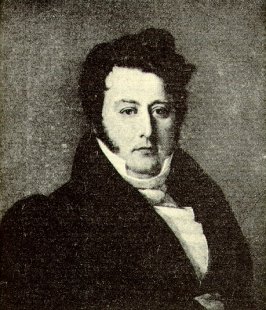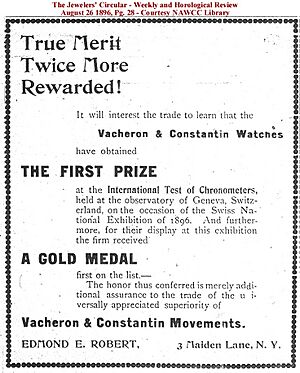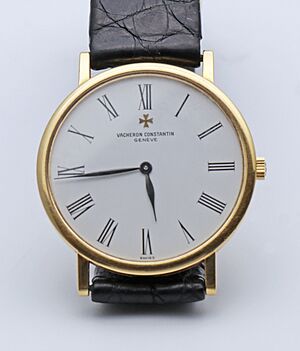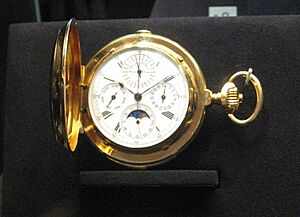Vacheron Constantin facts for kids
 |
|
| Subsidiary | |
| Industry | Luxury watchmaking |
| Founded | 1755 in Geneva, Switzerland 1819 (as Vacheron & Constantin) 1970 (as Vacheron Constantin) |
| Founder | Jean-Marc Vacheron |
| Headquarters | Plan-les-Ouates, Canton of Geneva, Switzerland 46°09′57″N 6°06′02″E / 46.16597°N 6.10054°E |
|
Area served
|
Worldwide |
|
Key people
|
Laurent Perves (CEO) |
| Products | Mechanical watches, clocks |
|
Production output
|
Around 20,000 (2018) |
|
Number of employees
|
Around 1,200 (2018) |
| Parent | Richemont (since 1996) |
Vacheron Constantin SA is a famous Swiss company that makes luxury watches and clocks. It was started way back in 1755, making it one of the oldest watchmakers in the world that has been making watches without stopping since it began.
Since 1996, Vacheron Constantin has been part of a larger Swiss company called the Richemont Group. In 2018, about 1,200 people worked for Vacheron Constantin around the world. Most of them work in the company's factories in Switzerland.
Vacheron Constantin is known for making amazing watches. One of their old pocket watches, made in 1929 for King Fuad I of Egypt, was sold for about $2.77 million in 2005. That makes it one of the most expensive watches ever sold at an auction!
In 2015, Vacheron Constantin made a pocket watch called Reference 57260. It was the most complicated mechanical watch ever made at the time, with 57 special features or "complications." Then, in 2024, they made an even more complicated one called Les Cabinotiers - The Berkley Grand Complication, which has 63 complications, including the first Chinese perpetual calendar.
Contents
History of Vacheron Constantin
How it all started
The company began in 1755 with Jean-Marc Vacheron. He was a watchmaker in Geneva, Switzerland. Jean-Marc Vacheron was friends with famous thinkers like Jean-Jacques Rousseau and Voltaire. They all loved philosophy, science, and watchmaking.
In 1770, Vacheron's company made the world's first watch with a "complication." A complication is any feature on a watch beyond just telling the time, like a calendar or a stopwatch. Nine years later, he designed the first special patterns on watch faces.
Jean-Marc Vacheron's son, Abraham Vacheron, took over the business in 1785. Later, in 1810, his grandson, Jacques-Barthélemy Vacheron, became the boss. He was the first to start selling the company's watches in other countries like France and Italy.
Jacques-Barthélemy realized he needed help to grow the business. So, in 1819, he partnered with François Constantin. The company then became known as Vacheron & Constantin. Their famous motto, "Do better if possible, and that is always possible," first appeared in a letter from François Constantin in 1819.
François Constantin traveled a lot to sell watches, especially in North America. In 1833, they hired Georges-Auguste Leschot. He was an inventor who helped make watch parts in a more organized way. He even invented a machine that could engrave tiny watch parts. This invention was very important for the watchmaking world.
Changes and new symbols
After François Constantin and Jacques-Barthélemy Vacheron passed away, different family members took over the company. At one point, two women were in charge!
In 1877, the company's official name became Vacheron & Constantin, Fabricants, Geneve. In 1880, they started using the Maltese cross as their symbol. This symbol came from a part inside a watch that looked like a cross and helped control the spring. You can still see this symbol on their watches today.
In 1887, Vacheron & Constantin became a joint-stock company, which means it was owned by many shareholders. That same year, a Vacheron Constantin watch was hidden inside a famous Fabergé egg! The company also won a gold medal at a big exhibition in Geneva for its amazing achievements. In 1906, the first Vacheron & Constantin store opened in Geneva.
During the Great Depression in the 1930s, the company faced tough times. In 1936, Charles Constantin became the head of the company. But in 1940, Georges Ketterer bought most of the company's shares.
Modern times
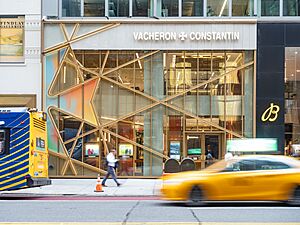
Georges Ketterer passed away in 1969, and his son, Jacques Ketterer, took over. In 1970, the company officially changed its name to Vacheron Constantin.
In the 1970s and 1980s, many watch companies faced problems because of the "quartz crisis." This was when cheaper, battery-powered quartz watches became very popular. When Jacques Ketterer died in 1987, the company was bought by Sheikh Ahmed Zaki Yamani, a watch collector.
Then, in 1996, a Swiss company called the Richemont Group bought Vacheron Constantin. In 2004, Vacheron Constantin opened a new main office and factory in Geneva. The building was designed by a famous architect named Bernard Tschumi. Today, Vacheron Constantin is an active member of the Swiss watch industry group and makes about 20,000 watches each year.
Company motto
Vacheron Constantin's motto is "Faire mieux si possible, ce qui est toujours possible." This means "Do better if possible, and that is always possible." This motto first appeared in a letter from François Constantin in 1819. It shows their dedication to always improving.
How Vacheron Constantin makes watches
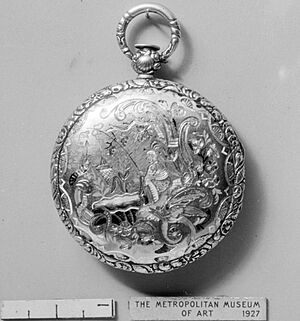
Amazing inventions and special features
Vacheron Constantin has made many important contributions to watchmaking:
- In 1790, they created the world's first watch with a "complication," which is an extra feature beyond telling time.
- In 1824, they made a "jumping-hour" watch, where the hour number instantly changes.
- In 1885, they created the first watch that wasn't affected by magnets. This was important because magnets can mess up how watches work.
- In 1901, their watches started receiving the Geneva Seal. This is a special mark that shows a watch is of very high quality and made in Geneva.
- In 1929, they made a "Grande Complication" pocket watch for King Fuad I of Egypt. "Grande Complication" means it has many special features.
- In 1955, they made the world's thinnest manual-winding watch movement. The movement is the inner working part of a watch.
- In 1992, they created the world's thinnest "minute repeater." This is a watch that can chime the time when you press a button.
- In 2015, they created Reference 57260, which became the most complicated mechanical watch ever made at the time, with 57 different features!
Famous watches
Most expensive watches

Vacheron Constantin has made some of the most expensive watches in the world:
- In 1979, they made a wristwatch called Kallista. It was covered in 118 emerald-cut diamonds. It took watchmakers 6,000 hours to make and jewelers 20 months to decorate. It was initially priced at $5 million, but by 2016, it was worth about $11 million!
- In 2005, the Vacheron Constantin pocket watch (Ref. 402833) made in 1929 for King Fuad I of Egypt was sold for about $2.77 million at an auction in Geneva.
- Also in 2005, a special Vacheron Constantin "mysterious clock" was sold for about $1.83 million.
- A Vacheron Constantin wristwatch called Tour de I'lle was sold for about $1.56 million in 2005.
- In 2011, a Vacheron Constantin minute repeater pocket watch from 1918, which belonged to a collector named James Ward Packard, was sold for about $1.76 million.
Overseas wristwatch
In 1996, Vacheron Constantin launched a new line of sporty, high-end watches called Overseas. The idea for this collection actually started in 1977 with a watch called Ref. 222. The Overseas watches were updated in 2004 and again in 2016. Some of them have cool features like a stopwatch (chronograph), World Time (showing time in different cities), or a moon phase indicator.
222 wristwatch
In January 2025, for the brand's 270th birthday, Vacheron Constantin brought back their 222 watch model. They released a new version made of steel. This watch is another important addition to their collection of luxury sports watches with integrated steel bracelets, alongside the Overseas model.
Patrimony wristwatch
The Patrimony wristwatch collection was introduced in 2004. These watches are known for their simple, elegant look and very thin cases. Their design was inspired by some of the company's watches from the 1950s.
In 2009, Vacheron Constantin added the "minute repeating" feature to some Patrimony watches. This resulted in the Patrimony Calibre 1731, which is the world's thinnest minute repeater. The Patrimony collection also includes watches with features like perpetual calendars (which always show the correct date, even in leap years) and moon phase indicators.
Métiers d'Art wristwatch
In 2007, Vacheron Constantin launched the Métiers d'Art 'Les Masques' collection. These watches featured tiny copies of ancient art masks on their dials. The company chose 12 masks from a museum and carefully reproduced them.
In 2012, they introduced the Métiers d'Art 'Les Univers Infinis' collection. These watches featured designs with interlocking shapes, like puzzles. These designs were inspired by the work of a Dutch artist named M. C. Escher.
250th anniversary edition
In 2005, Vacheron Constantin celebrated its 250th birthday by creating a special wristwatch called "Tour de I'lle". This watch has 834 tiny parts and 16 different complications! It took over 10,000 hours of research and development to create.
The Tour de l'Ile is one of the most complicated wristwatches ever made. Only seven of these watches were created, and each one sold for over $1 million. One of them, with a unique black dial, was sold for about $1.56 million at an auction in 2005.
260th anniversary edition
In 2015, for their 260th anniversary, Vacheron Constantin showed off the world's most complicated mechanical watch at the time, called Reference 57260. This amazing pocket watch took three watchmakers eight years to build! It has 57 complications and was made for a special client. The company didn't say the exact price, but it was somewhere between $8 million and $20 million.
The Reference 57260 continues a tradition of Vacheron Constantin making very complicated pocket watches for important people. For example, they made a pocket watch for James W. Packard in 1918, and another for King Fuad I of Egypt in 1929. They also made watches for King Farouk of Egypt in 1946 and Count Guy de Boisrouvray of France in 1948.

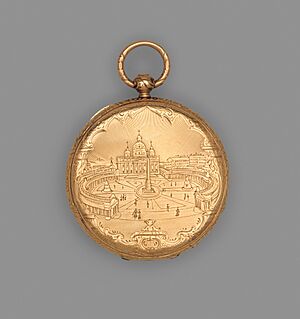
See also
 In Spanish: Vacheron Constantin para niños
In Spanish: Vacheron Constantin para niños
- List of watch manufacturers
- Manufacture d'horlogerie
- The Vacheron Constantin Reference 57260
- Tour de I'lle


